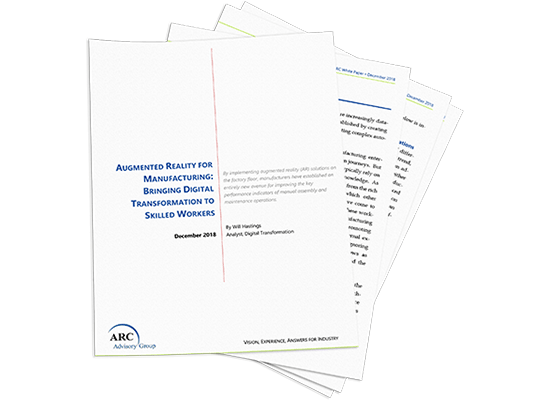Global expansion is a complex issue that affects the skill gap in multiple ways. Primarily, it reflects an exodus of manufacturing jobs from industrialized nations to countries where the cost of living and salaries are lower. While this reduces costs of operations for large enterprises and helps create global economic growth, it has also contributed to the skills gap. Manufacturing increasingly becomes considered an outsourced occupation—which can hinder companies that desire or require operations in more developed economies. It also creates a burden for companies that must increasingly manage localized processes, from training and guidance, to translation, to local compliance and governance.
AR is a communication medium that can massively reduce localization requirements, both in providing new training and in ongoing guidance. Content is easily adapted to local languages, but more importantly, AR also relies heavily on iconography, design files, products themselves, and other elements that reduce the amount of text-based content.
Increasing product complexity
While the previous factors deal primarily with workforces, product complexity represents a different type of skills gap pressure. Competition and evolving market conditions have accelerated the need to customize and personalize products, requiring more intricate and agile operations and a wider variety of processes for individual skilled workers. Product complexity also requires manufacturers to better facilitate the documentation, management, and delivery of training and guidance. This pressure increases with accelerated, on-demand processes.
Industrial enterprises can now use AR to easily update and deliver manuals and guides almost immediately, instead of reprinting and shipping them to reflect product variance. Even relative to PDF and digitized manuals, AR is easier to navigate and select. Hands-free, over-the-shoulder guidance allows workers to easily understand instructions for different assembly, operation, or maintenance variations.
Addressing complex challenges requires a multi-faceted skills solution: augmented reality
The skills shortage is a complex problem that requires manufacturers to change how they recruit talent, manage their resources, and even how they interact with government agencies as they lobby for workforce-friendly legislation. And while there is no single answer, augmented reality is proving to be a game-changer for how industrial companies onboard, upskill, and empower their employees. In fact, industrial applications of augmented reality are predicted to far outpace all other types of AR investment over the next half-decade.
To learn more about why augmented reality is so effective for training and guidance, the innovative ways its being implemented, and how you can harness AR for rapid value, download this complementary eBook: Closing the Industrial Skills Gap with Augmented Reality.










